Tricks in Dungeons and Dragons have existed from the very beginning. But the first time, I believe, that they were ever really discussed directly was in the 1st Edition Dungeon Master Guide on page 216. The Dungeon Masters Guide really does not define them but merely refers to them as clever and innovative artifices, deceptions, conundrums and sundry tricks.
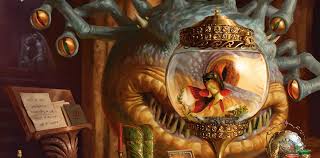
The Dungeon Masters Guide gives a list of potential features that one might find in a dungeon, tomb, crypt, castle or other such place. Then it gives the reader a slightly longer list of potential attributes which could be assigned to these features to create a magical “trick” to confuse or amuse your adventurers.
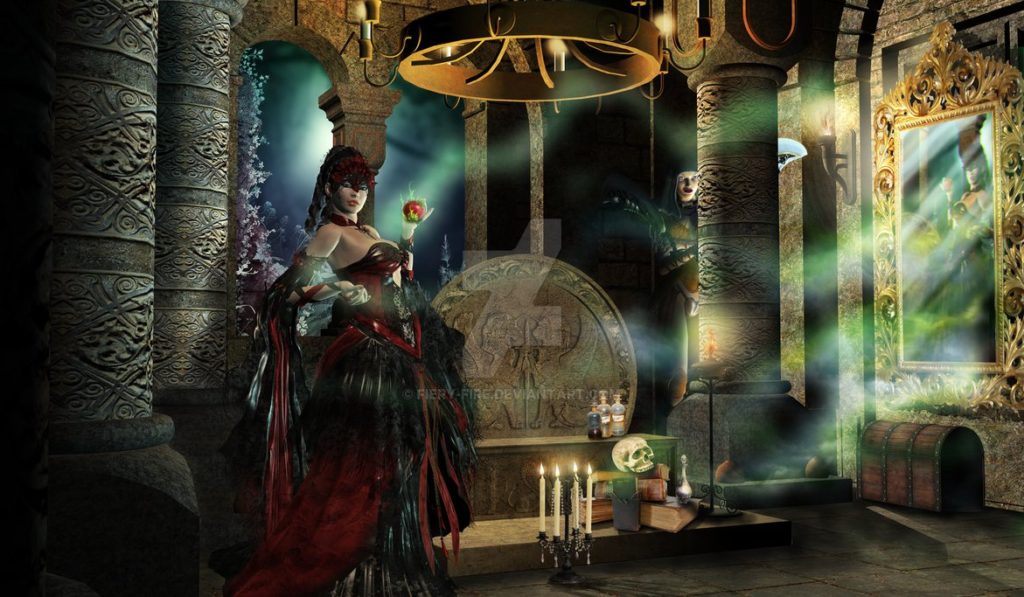
Certainly magical tricks existed prior to 1st Edition. But they were not really described as such. Basically they are just those weird little magical things that one might encounter in a dungeon which do not fit into the categories of traps, monsters, non player characters or encounters. They might include such things as riddles, puzzles, teleporters and similar items. Arguably some of the spells that a magic user might cast could be considered as creating a trick. Such examples that come to my mind might be as follows:
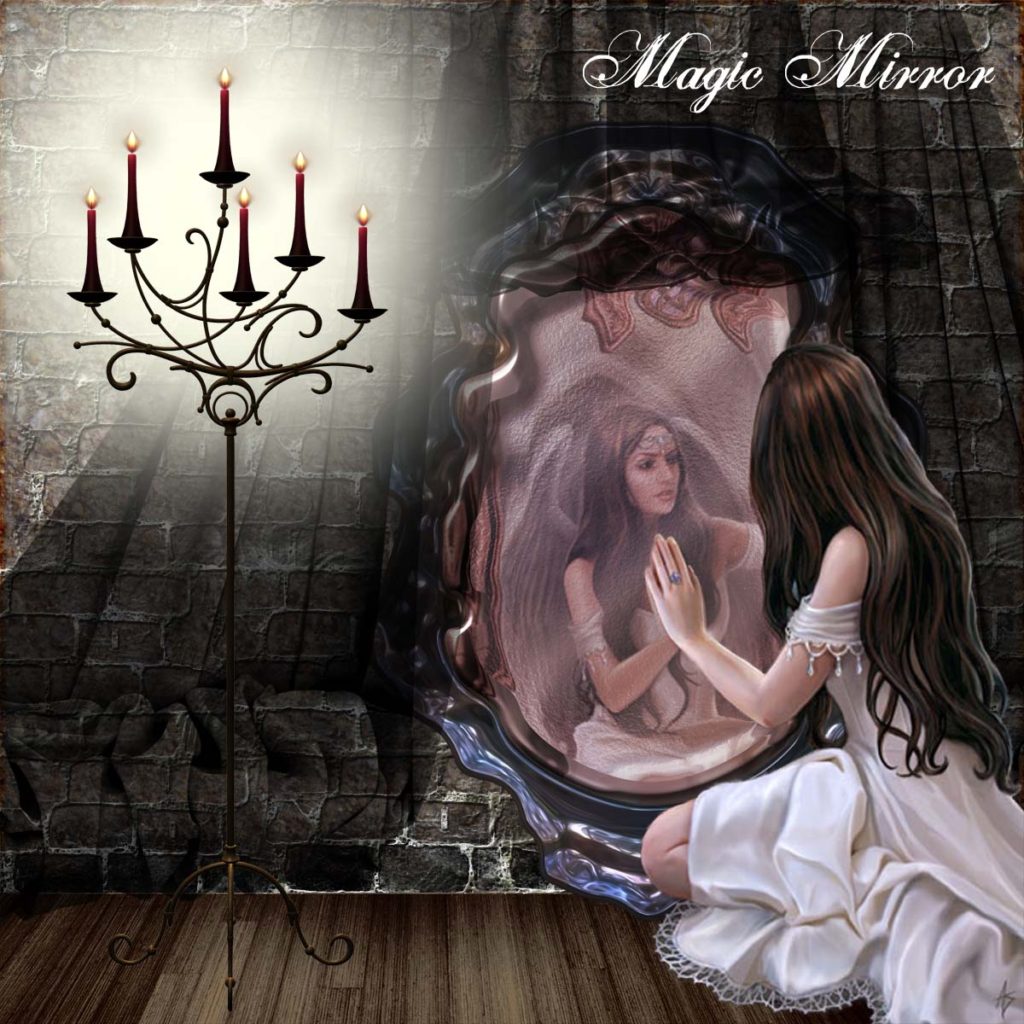
- Magic Mouth
- Leomunds Chest
- Dancing Lights
- Tenser’s Floating Disc
- Any kind of wall spell
- Blade Barrier
Certain features deserve discussion as they are frequently encountered tricks in many adventures. These will be described below.
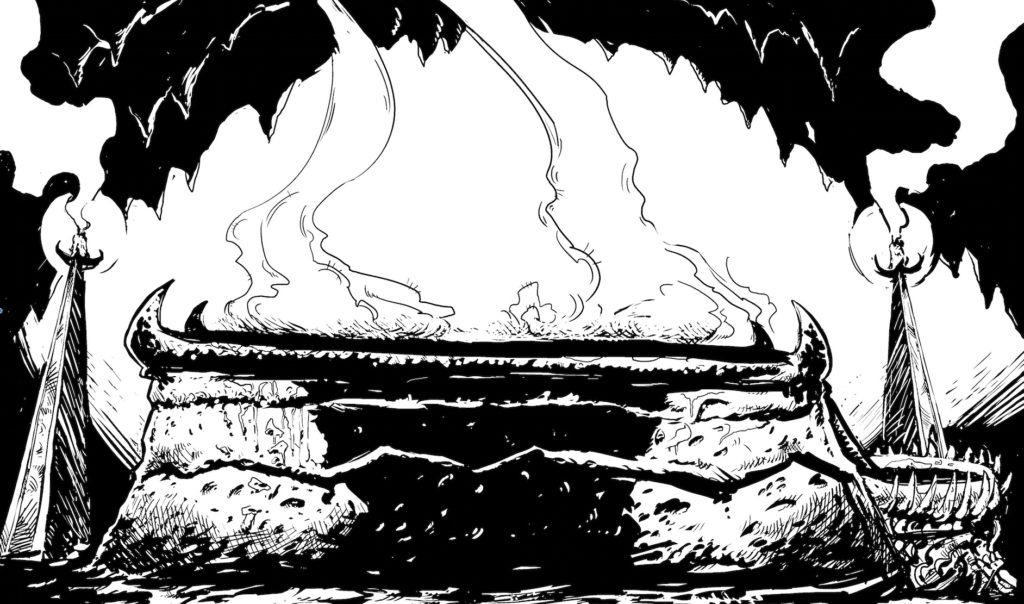
Magical Altars
Altars are frequently encountered in temples, tombs and crypts. Tricks in Dungeons and Dragons certainly include such altars as they are often imbued with magical energy from clerics that use them or the gods in which they worship.
Not every magical altar encountered is likely to be evil in nature. But many are. Such altars may enhance the evil powers of the clerics which use them or they may be an essential part in evil rituals and sacrifices. Such altars are often black in color but many may also be the color of blood. Or they might be covered in the blood of innocents slain upon it’s surface in a ritual.
Evil altars are probably best not touched by someone of good alignment. Such contact might be very painful or even fatal to a good aligned character. This might especially be true for a cleric or paladin of opposite alignment to the altar.
Good altars, on the other hand, might enhance healing or allow resurrection of the dead. Such altars might only display their magical abilities once a proper offering has been made.
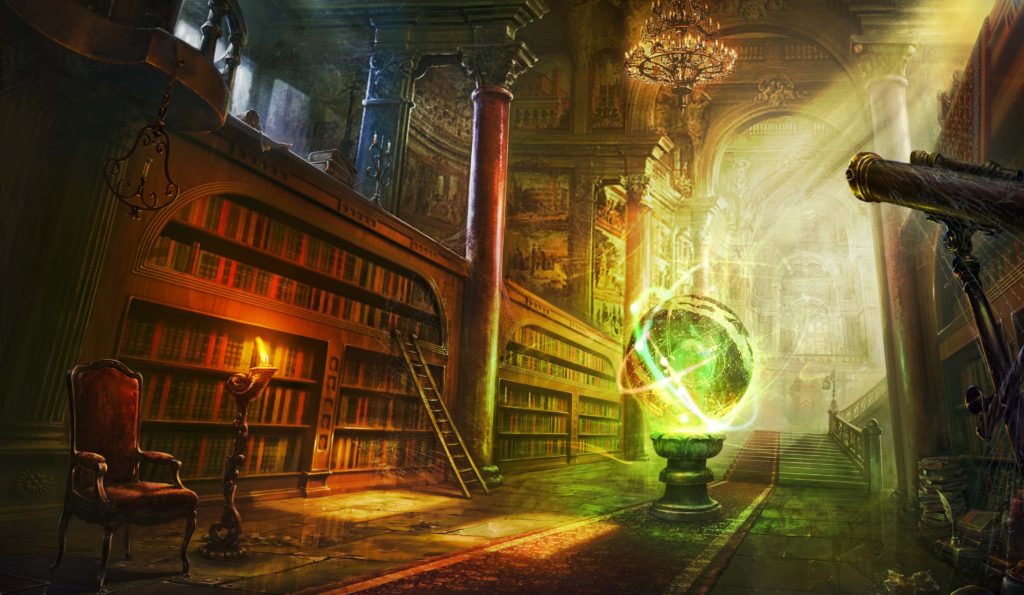
Some potential features of evil aligned altars:
- Animation of the dead
- Disintegration of anyone of opposite alignment that touch it
- Animation of the altar itself if touched or desecrated
- Sliding away to reveal a tunnel below it leading down
- Hidden compartments with magical potions or scrolls inside
- Anti magic effect which protects the evil cleric behind it
- Blood. Lots of blood. The altar itself might bleed if attacked. It may have soaked up the blood of many innocents over the years
- Geas to do some evil act
- Curses someone of opposite alignment
Some potential features of good aligned altars:
- Healing
- Resurrection
- Geas to do some holy act
- May bless someone of similar alignment who touches it or makes an offering or kneels before it
- Might temporarily (or permanently) imbue a bonus to one of the primary statistics of the person who makes a proper offering or completes a quest for it
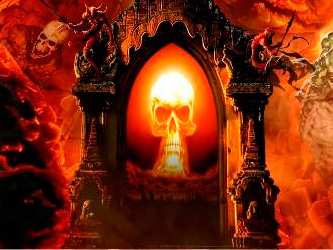
Some potential features of neutral aligned altars:
- Reincarnation
- Might teleport someone of another alignment from it when touched
- Might be a stone altar or wooden altar of some great druid
- Could cause plant growth
- Cause barkskin for the person touching it if proper alignment or with proper offering
- Might imbue the person giving a proper offering with the temporary ability to speak with plants or animals
Obviously these lists are not exclusive. There are many potential ways in which someone could create a unique and interesting magical altar for use in their adventures.
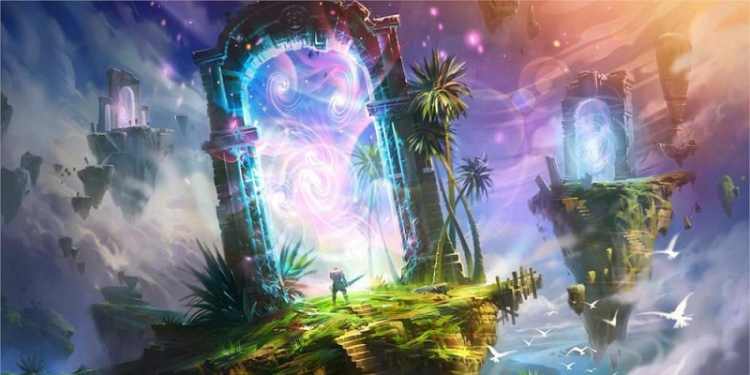
Magical Portals are also tricks in Dungeons and Dragons
Portals are gateways to other worlds. Magical portals as Tricks in Dungeons and Dragons are unusual but not unheard of. They can come in the form of some glowing archway or a magic mirror. They could be some strange stone object with glowing mass inside of it like the Star Trek episode “The City on the Edge of Forever.” Magical portals come in all kinds of shapes and sizes.
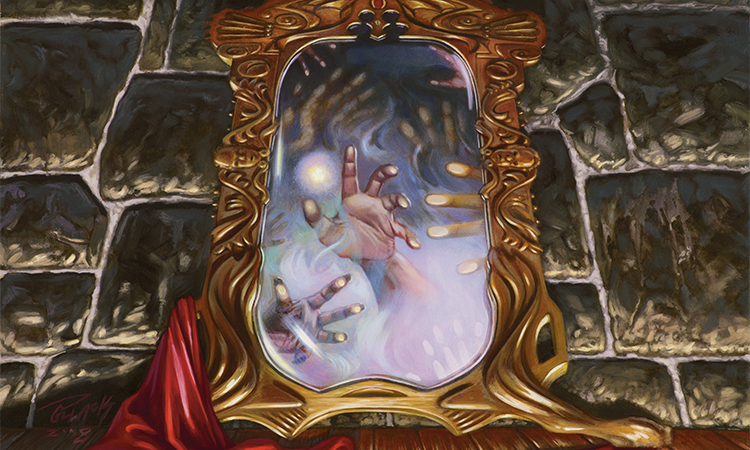
Magical portals could be gateways to travel:
- To other planes of existence
- To the heavens or the hells
- To other universes or the astral plane
- To distant parts of the same plane in which the adventurers reside
- To the Underdark
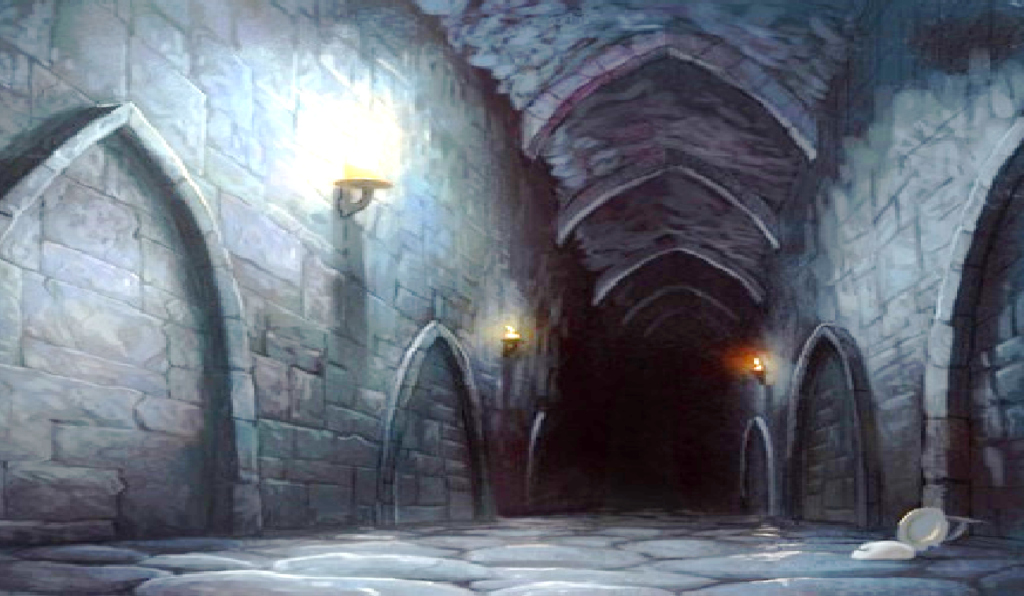
Archways
Archways are one of the old school tricks in Dungeons and Dragons. You really do not see them used much in later editions than 1st or 2nd. But they were once commonly found in adventures of that era and earlier. Archways could be good or bad for the adventurer passing through one. Sometimes they did nothing at all. And sometimes they did magical things such as:
- Changing the sex or race of the person passing through
- Acting as a teleporter or magical portal
- Might remove the armor or weapons of the person passing through
- Could be blocked by a wall of force or prismatic wall
- Might change the intellect of the person passing through
- Could swap the minds from one adventurer passing through to that of another
- Could randomly appear and disappear
- Could randomly do things to one character and then nothing to the next
- Enlarges or diminishes the size of people passing under
- Changes alignments of those going through
- Everyone passing through has a doppleganger created for him or her
- Everyone passing through gains mirror images following them
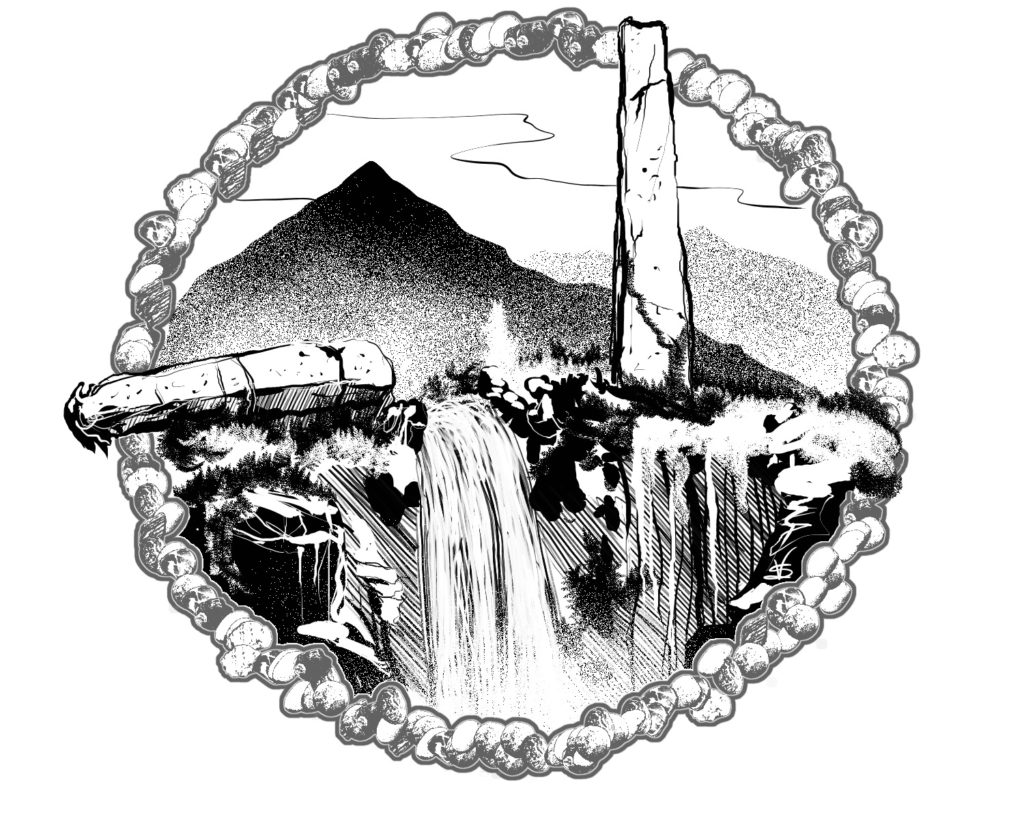
Magical Pools are frequent tricks in Dungeons and Dragons
Pools have been tricks in Dungeons and Dragons since the earliest games. Water tends to pool up in the deep dark places that explorers visit in this game. Sometimes other things in these dark places give these pools magical effects. One of my favorite examples of this in a published adventure comes from the Basic Set adventure “In Search of the Unknown”. One of the rooms in the upper level has about twenty pools in it. Some of these pools have magical effects. Others do not. The pools in that adventure are a good list for other dungeon masters to use for their own adventures:
- Healing
- Acid
- Disease
- Green slime
- Clean drinking water
- Wine
- Dried up pool
- Boiling water/hot spring
- Aura (drinking it causes the character to shimmer with magical aura revealing their true alignment
- Sleep
- Filled with fish
- Dry ice (unexplained)
- Treasure beneath the water
- Muting/silence after drinking
- Poison
- Idiocy
- Curse
- Invisibility after drinking or bathing in it
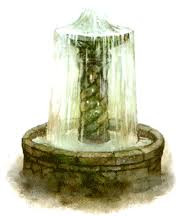
Magical Fountains
Fountains as a trick in Dungeons and Dragons have been common to many of the published adventures. Fountains are often ornate and have statues in the center of them. Some may be small and others may occupy a wide section of a room or chamber. Palaces, tombs, castles and crypts might have such fountains. Even the cities themselves might have them. Not all will be magical. Some will be.
The magical effects of fountains may be beneficial. Or they may be detrimental. The nature of the place where the fountain is found might give an indication as to it’s effects. A riddle or a puzzle might need to be solved first in order to gain knowledge about the fountain or even to cause it to have such an effect. Sometimes the waters themselves have unusual colors or auras.
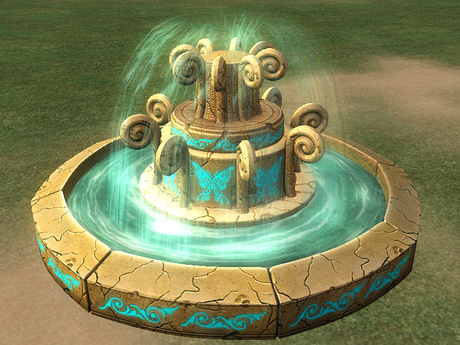
Some possible fountain effects:
- Healing
- Poison
- Changing colors
- Invisibility
- Invulnerability
- Giant strength
- Weakness
- Diminution
- Enlargement
- Flying
- Gaseous form
- Heroism
- Speed
- Insanity
- Feeblemind
- Polymorphing
- Water breathing
- Resistance to fire, acid, lightning or cold
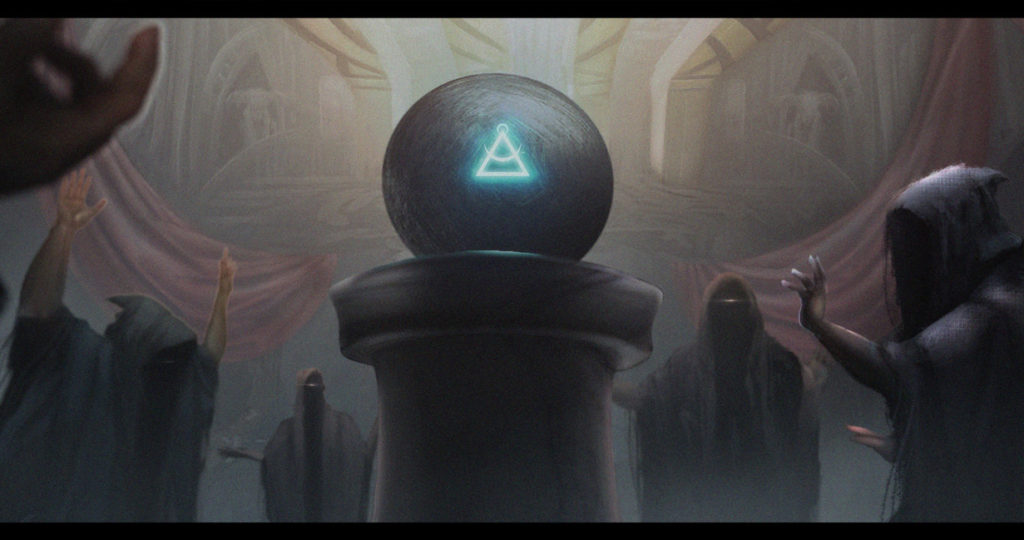
Magical Pedestals
Pedestals are a frequently found trick in Dungeons and Dragons. Pedestals may have valuable items on top of them protected by magic. Such items might include:
- Artifacts
- Relics
- Crowns
- Keys needed for other places in the dungeon
- Scrolls, books or writings
- Riddles
- Treasures
The pedestal itself is rarely the end goal but is often the obstacle to reaching the goal of the adventurer. Often pedestals are trapped. One good example of this that comes to mind is the original Indiana Jones Movie. The golden monkey head that Indiana Jones seeks at the beginning of the movie is on a pedestal. The pedestal itself is trapped. When the weight of the golden head is removed the pedestal sinks and then bad things begin happening all around the adventurer. This is, of course, not magic. But it is a good example of what a dungeon delver might find or expect.
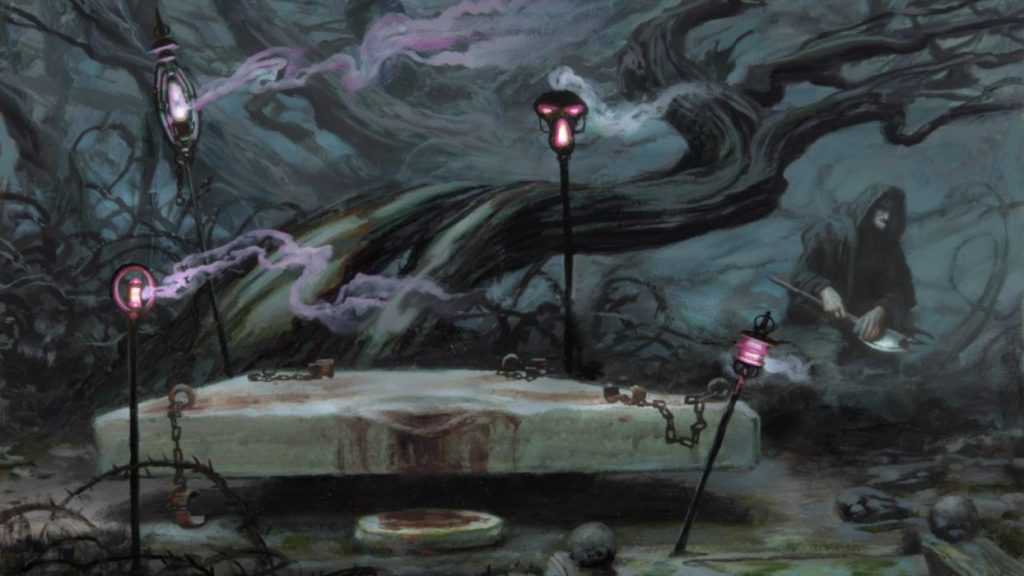
Pedestals themselves are often imbued with magic of their own. Some examples might include:
- Force fields protecting the item atop it
- Prismatic walls protecting the item on top of it
- Knobs, button and levers which have different magical effects when used. Some may cause harm. One sequence will lower the protections
- Riddles on the base of them or puzzles to be solved before the force field lowers
- Contact with the surface may cause greed, insanity or alignment change
- Teleportation of those touching it
- Hidden compartment might release a clue when right place is touched
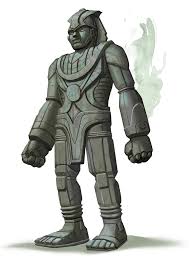
Statues are another frequently used trick in Dungeons and Dragons
Statues are to be found in all sorts of places where adventurers might explore. Castles, tombs, crypts, palaces, cities and other places are likely to have statues about. Most will not be magical. Once in a while one will be. The adventurers should never know when or where they will encounter one that is magical.
Famous heroes, gods and kings are frequent subjects of statues. Most will be made of stone. Some will be carved from precious stone such as marble or onyx. Others might be made from metal. Some of the metal statues might be made from precious metals such as gold or silver. Statues are sometimes quite valuable. But they are usually very bulky and heavy. Removal from a hostile dungeon will be a daunting adventure all it;s own.
When a statue is discovered to have magical properties these might include:
- Riddles
- Puzzles
- Spinning, moving or sliding to reveal secret doors behind or to reveal secret doors present in the room
- Might provide clues to some important riddle or puzzle in the dungeon
- Could hide or possess some hidden magical item
- May award a magical item to adventurers who solve their riddle or puzzle
- May animate and attack
- Could actually be a stone or iron golem in disguise
- Could actually be other adventurers turned to stone by a medusae or basilisk nearby
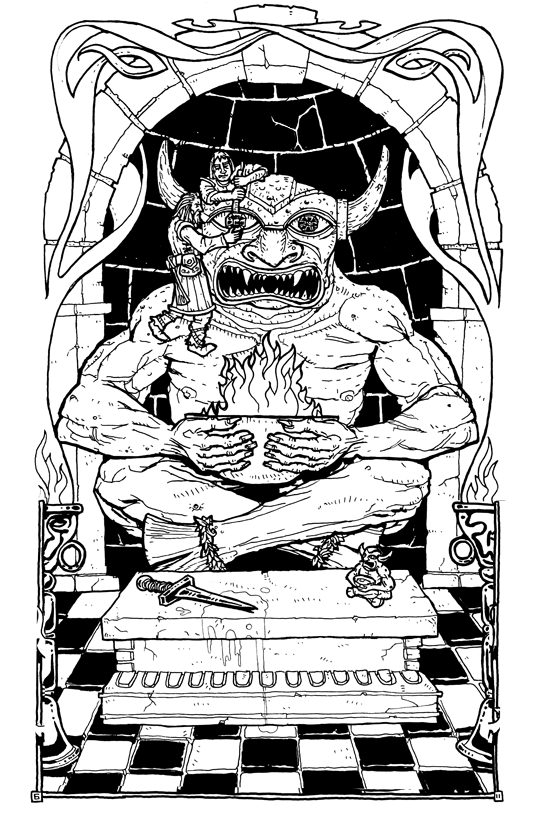
Idols
Idols are found often in places where primitives live. Temples and catacombs might have idols to their pagan gods. Sometimes these idols are imbued with magic. Offerings and sacrifices are made before them. Treasures are often adorned on them. One good example of this is the demon idol from the cover of the player’s handbook. Such an idol might be trapped. It might also have magical tricks to confuse or delay the adventurers. Some examples of features might include:
- Placing a weapon in the fiery brazier of the statue might cause it to be enhanced by magic
- Placing an offering before it might cause it to bless the person doing so
- Might curse those who do not place offerings or who desecrate it
- Could spill fiery oil into the room if a gem eye or tooth is pulled from it causing a fiery explosion in the room around it (from the flaming brazier that it hold)
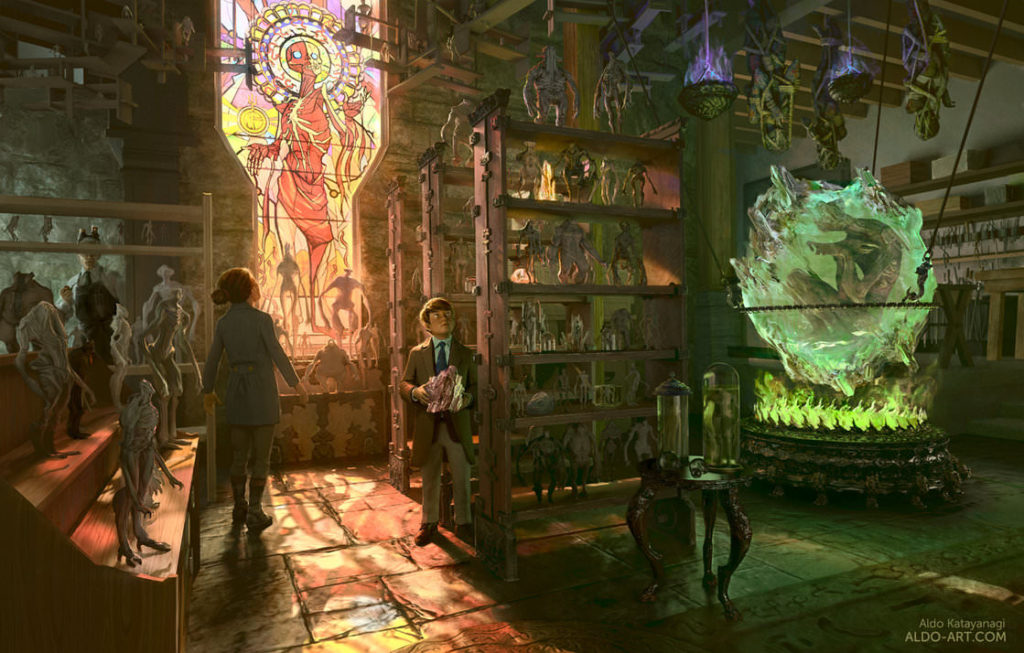
Other objects of art are often used as tricks in Dungeons and Dragons
Such items might include:
- Tapestries
- Paintings
- Decorative containers such as vases
- Frescoes
- Pillars and columns
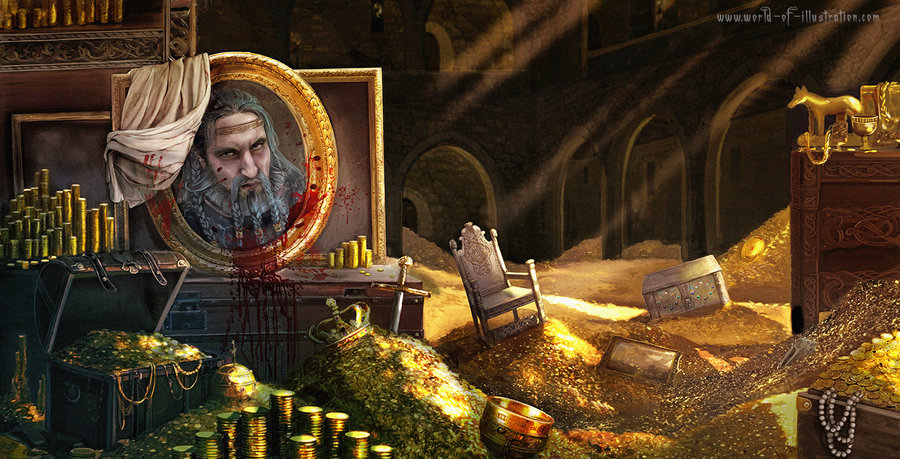
These items are often decorated or carved. Some are quite valuable. Many are quite old when discovered. Such items often depict gods, kings and legendary heroes long dead. Some possible features might include:
- Disintegrates into dust when touched revealing a secret or concealed door hidden behind it
- Causes greed when touched
- Insanity when touched
- Insanity when viewed
- Petrification when viewed
- Animates and talks or casts spells or yells for help
- Teleports a person touching it into the scene in the artwork itself
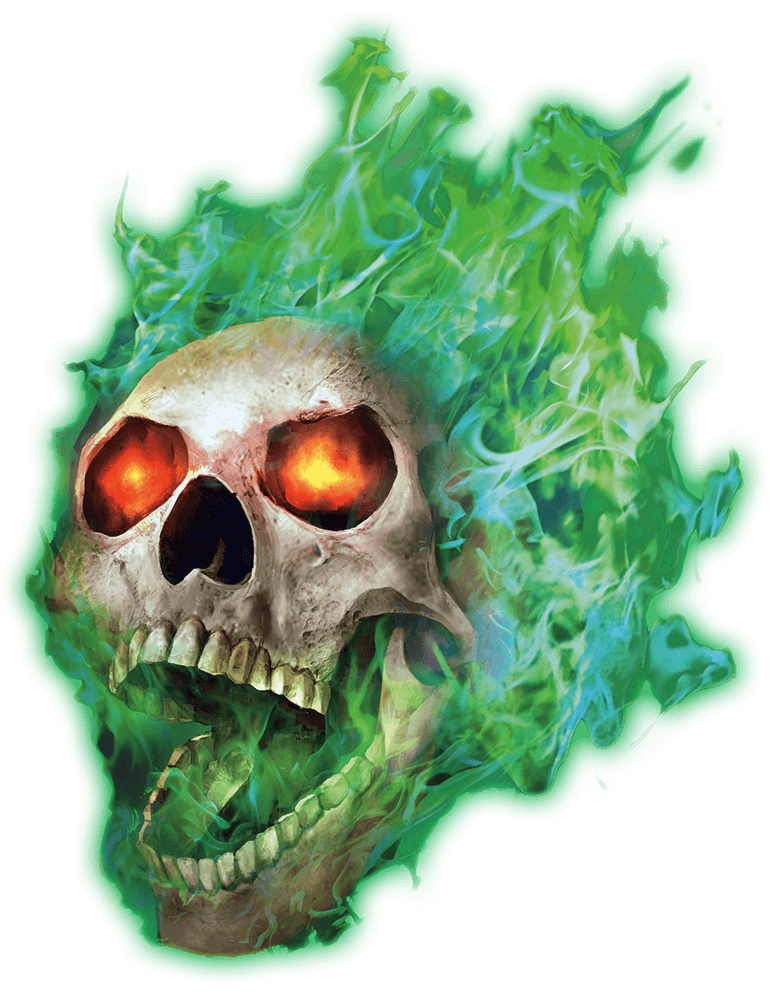
Tricks in Dungeons and Dragons come in many forms
The items discussed above are not all inclusive by any means. There are literally hundreds of potential dungeon features that might have magical effects and properties. There are hundreds more attributes that could be applied to them. Creativity is the best friend of a dungeon master designing such tricks. Most have been used so often that players expect them when encountered. It is best to have many features in dungeons that are not magical so then when others are encountered they will not be totally expected. It is probably also best to come up with original attributes to apply to these features in order to keep players guessing.
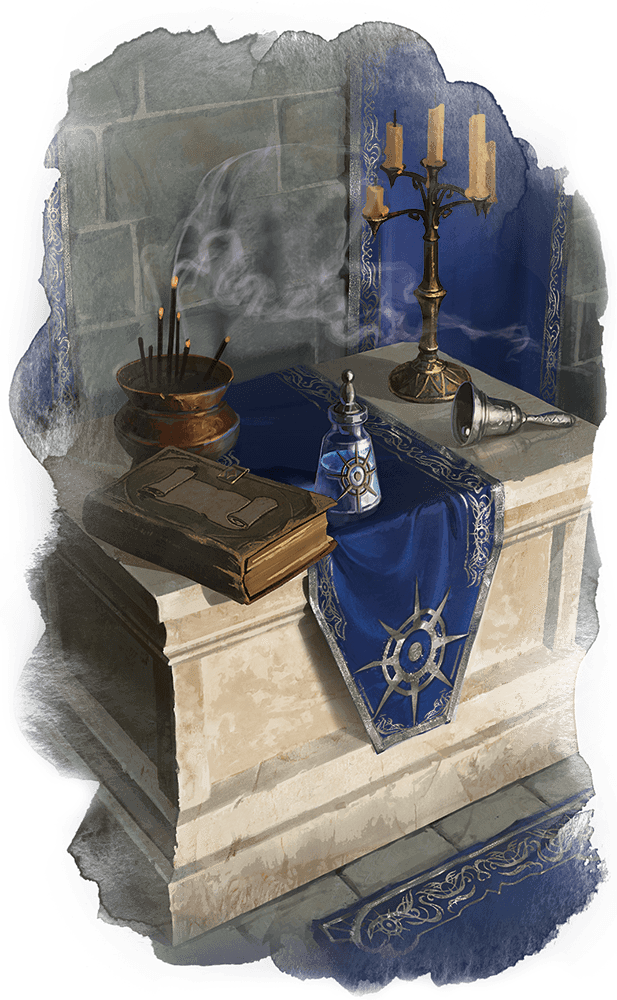
If you enjoyed this article then you might enjoy these:
- Traps in Dungeons and Dragons
- Torture Devices
- Sieges in Dungeons and Dragons
- The Tax Man
- Illusions Part one
- Illusions Part Two
- Psionics in Dungeons and Dragons
- Tricks, Emptry Rooms and Basic Trap Design Review
- Warfare in Dungeons and Dragons
- Weather in Dungeons and Dragons
- Omens and Prophecies
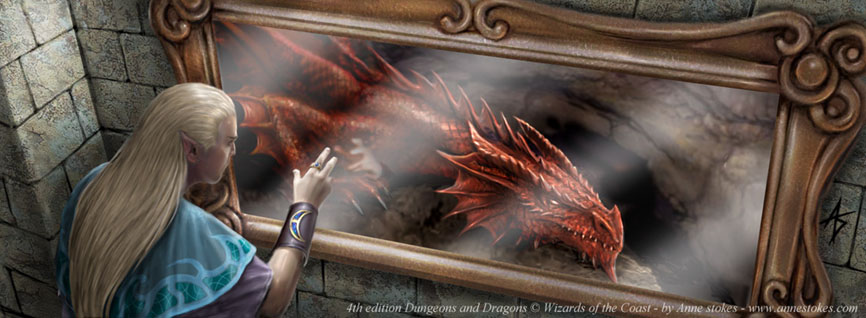


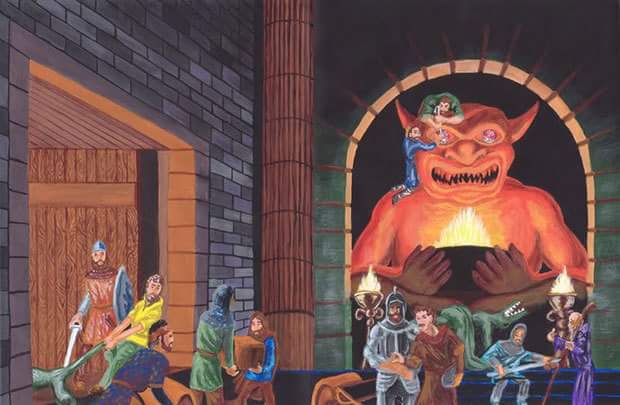
Tricks have literally been in the game since its first publication. Take out your copy of OD&D Volume 3: The Underworld & Wilderness Adventure, and flip to page 6: the header is “Tricks and Traps”, and is mostly about things which complicate mapping (natural caverns, elevator rooms that don’t actually move, dead ends to trap escaping players). There is a short sentence on “Illusion, mind control and geas rooms”, however.
Tricks got further defined in The Strategic Review Vol.1 No.1 in the “Solo Dungeon Adventures” article (notable for later being adapted into AD&D’s Appendix A). The table for TRICK/TRAP has your typical traps, but it also has elevator rooms, sliding walls, and gas that varies between being deadly, doing absolutely nothing, and giving 1d6 strength to all Fighters for 1d4x10 turns. It’s still basically synonymous with “trap”, though.
Supplement I: Greyhawk, in addition to adding variable damage dice and Thieves and Beholders and all the stuff that makes modern D&D D&D, has a list of additional Tricks and Traps on page 61-62. These are much more similar to the AD&D ones, having magical statues and a box of living animal crackers and a device with various levers and buttons that do different things and a high-stakes magical item casino. Page 63 also has a bunch of suggestions for “Monstrous Tricks and Combination Monsters”, such as fire-resistant mummies, a Medusa riding a Gorgon, and the somewhat infamous Golden Dragon that is actually a mobile Yellow Mold.
That’s kind of it for the pre-AD&D history, though. You can see their obvious influence in the AD&D Appendix H, however: there’s even a Combination Monster in a sample Yellow Mold-covered Shrieker! (And, of course, the DMG outright says “For some further examples of tricks in the campaign you may with to consult [OD&D Vol.3 and Greyhawk]”)